Given the complexity of search algorithms, it’s not practical to focus on all Google ranking factors. Instead, you can focus on essential factors and use an SEO plugin to optimize your pages before publishing.
Google processes over 3.5 billion searches per day, making it the most influential search engine for online content discovery and website traffic. For companies relying on their web presence, higher Google rankings can spell the difference between thriving or failing.
While Google’s algorithms remain secret, optimizing for the top factors typically elevates a site and confers competitive advantage.
This article explains critical Google ranking factors like quality backlinks, positive page experience, and original content creation.
Work on these, and you’ll increase your odds of landing on that coveted first Google results page.
What are Google Ranking Factors?
Google ranking factors are metrics used in algorithms to evaluate and rank pages in search results.
These factors seek to measure page aspects like:
- Relevance – How relevant is the content on a page to the search query? (For local searches, proximity of a business to the searcher also comes into play.)
- Quality – The overall authority, trustworthiness, and value provided by a page. This includes factors like expertise, reputation, and factual accuracy.
- Functionality – Site speed, mobile performance, and security can also impact rankings.
Quantitative Factors, Qualitative Signals
Search algorithms rely on quantitative data. Yet Google also uses human teams to research qualitative signals like author experience, expertise, authoritativeness, and trustworthiness: E-E-A-T.
Google’s human raters don’t impact rankings. Instead, they help the search giant assess how well their automated algorithms work.
Key: Understand Google Search’s Goal
The goal of Google Search is to be a good matchmaker. The search engine wants to match users with the most relevant, helpful, accurate, and high-quality content available.
To rank well, help Google meet its goal by creating content that satisfies users and is original, unique, and reliable.
10 Google Ranking Factors to Act On
With this background, you’re ready to dig into top Google ranking factors.
1. High-Quality Content
It’s no secret that Google rewards quality content. For any given keyword, the articles ranking at the top are deemed the best on the subject.
This measuring of quality is relative: at any given moment, the #1 article on a topic may be unseated by a newcomer.
So, what is high-quality content? One can arrive at a definition of it by using common sense. But Google has been explicit in defining quality.
High-quality content offers original insights, helpful information, or unique first-hand experiences.
This caliber of content satisfies users, is factually correct, and easy to navigate.
It’s focused on satisfying user intent rather than just targeting keywords. High-quality content prioritizes expertise, depth, credibility, and strong presentation over trying to manipulate rankings.
Ultimately, it is the most useful, reliable source that searchers could hope to find on a given subject. This is why, of all Google ranking factors, quality content is chief.
Tips for Creating Quality Content
To act on this ranking factor, keep these guidelines in mind when creating content:
- Easy to read: Write in “plain English.” Skip the big words.
- Well-organized: Start with an outline to keep content organized.
- Unique: Be original, whether in insights, perspective, or creativity.
- Comprehensive: If top-ranking articles on your topic are detailed, ensure yours is comprehensive.
- Up-to-date: If your article relies on recency for relevance, update it periodically.
- Signal E-E-A-T: Identify and express what you’re good at and why users should choose your content.
Remember: ranking is a competitive endeavor. So, explore the top-ranking pages for your chosen keyword. How will your page be better?
2. Search Intent
If you want to rank high, your article has to be top-quality and satisfy search intent.
Search intent refers to the purpose and motivation behind a search query. It describes what a searcher is trying to accomplish by entering a particular search term or phrase.
Satisfying search intent for a given topic can include:
- Answering common questions searchers have
- Formatting your article to suit its purpose
An example of formatting for search intent is writing on a “how to” topic and organizing it by numbered steps.
Search engines assess search intent in order to present the most relevant results.
Put it in action: You can learn to identify search intent and use it to shape content. Our search intent method uses the Chrome browser and only takes minutes.
3. Links: Internal Links and Backlinks
Internal links and backlinks can impact your rankings in significant ways.
- Internal links are links that connect pages of the same website.
- Backlinks are links from other websites to yours.
- Spam links are backlinks generated by a link scheme.
Let’s look at these 3 types of links to understand how and why they can affect your rankings.
Internal Links:
- Help search engines crawl and index a site’s content more thoroughly
- Connect semantically related pages around topic clusters
- Help Google understand which pages on your site are most important
Backlinks:
- Help validate a page’s relevance and authority on a particular topic
- Pass link equity from authoritative external sites to boost rankings
- Act as “votes” to increase a page’s overall popularity
- Show that quality content is being referenced around the web
Quality backlinks from reputable sites provide strong endorsement signals and are a key Google ranking factor.
Internal links and quality backlinks are vital for strong rankings because they signal to search engines that a page is valuable and useful.
The more contextual internal links and credible external backlinks to a page, the more confidence search engines have in ranking that page well for its focused keywords.
Spam Links:
- Manipulative links from ‘splogs’ (spam blogs) can harm rankings.
- Repeated use of “money anchors” in backlinks can send a red flag to Google.
- Spam links dilute the impact of earned backlinks gained organically.
Spam backlinks violate search quality guidelines, trigger ranking penalties, and can sabotage rankings.
By contrast, authentic internal links and backlinks gained through creation of value help pages rank better.
Summary: Managing links appropriately is crucial for good search visibility.
Put it in action:
- Internal linking: Make sure your most important pages (like your top product or service page) have plenty of internal links pointing to them. And fix orphan pages.
- Backlinks: Compelling content attracts links. People are eager to share it. But you can also contact related websites and request they link to your top content.
- Spam links: Never pay for dofollow links. The links you acquire will be from a link scheme, which can ruin your SEO.
To learn more about links as Google ranking factors see:
4. Alt Text (Alternative Text)
Definition: Alt text is a textual description of an image. The description is wrapped in an HTML tag, which helps search engines interpret it.
Popular content management systems (CMS), like WordPress, provide a blank space for you to add alt text. The CMS then automatically adds the required HTML to that alt text.
Understanding Images: ALT text is a ranking factor for Google Image Search. So, if you want your images to appear in these searches, providing alt text for each image on a page is essential.
Search engines rely on alt text to understand image content and to rank images for relevant queries.
This is why alt text, or alternative text, is important in search engine optimization (SEO).
Precise, descriptive alt text, along with the surrounding article text, provides context to search engines about the purpose of the image and how it relates to the web page content.
Example: Imagine you have a website about cat breeds and publish an image of a Norwegian Forest kitten. What would be good alt text for this image?

- Bad alt text: “kitten”
- Good alt text: “norwegian forest kitten” or “calico norwegian forest kitten”
Best practice is to add alt text for each image on a page unless the image is “decorative.” (A decorative image is a generic image added for no reason other than to add visual variety to a page.)
By having descriptive alt text on web pages alongside quality content, sites can improve rankings and traffic from search engines.
Pro Tip: To quickly determine if images on a page are missing alt text, use the free AIOSEO Analyzer Chrome extension
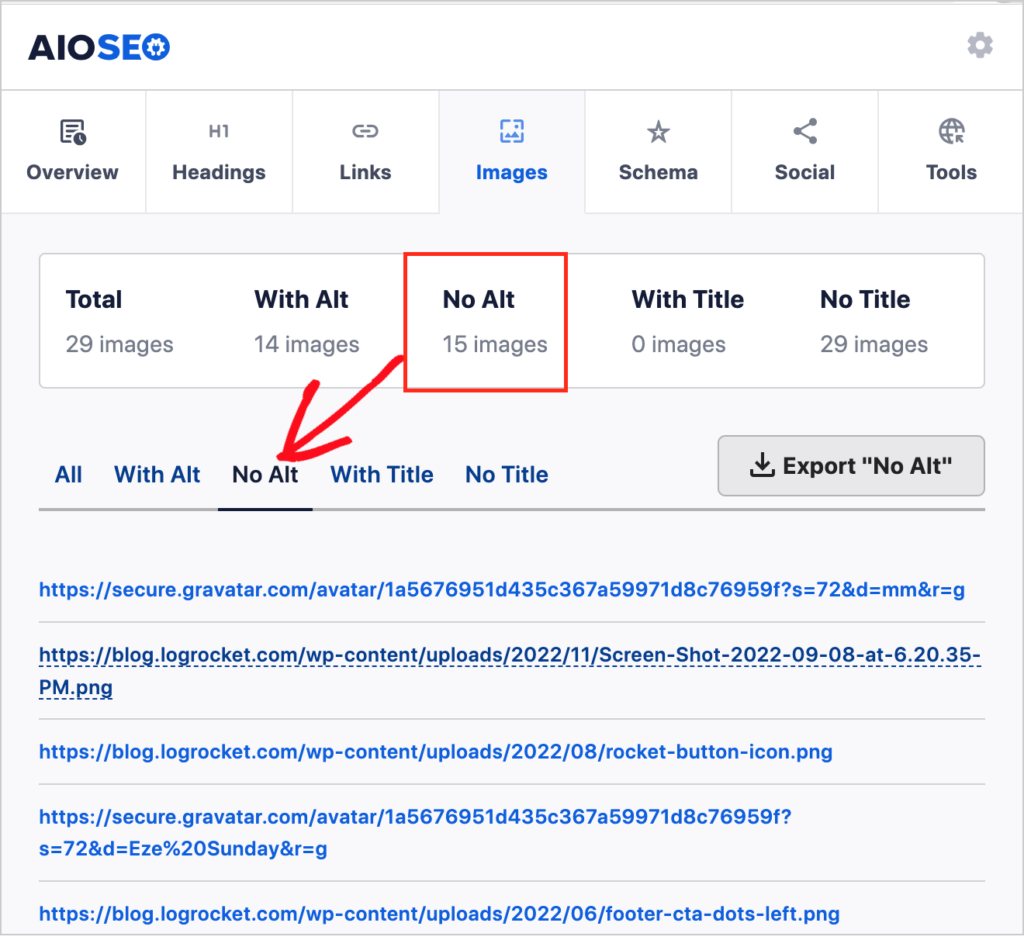

Learn more about image optimization.
5. Page Experience
Page experience is one of the most cited Google ranking factors. It’s directly related to user satisfaction with search results.
Remember Google’s goal: to provide high-quality, relevant pages to searchers. Google doesn’t want to give a top-ranking position to a page that takes forever to load or an online store with a broken checkout system.
So remember, quality goes beyond a page’s text, images, or video.
Specifically, page experience includes:
- Security factors
- Page speed
- Mobile site performance
Intrusive interstitial ads and popup videos can provide a poor page experience. Confusing navigation can also frustrate users.
So optimizing page speed, site architecture, responsiveness, and general ease-of-use has a growing influence over site rankings in SERPs.
- Website Speed and Mobile Friendliness: Pages with faster load speeds and better responsiveness work better for mobile users. As mobile searches continue to dominate, Google is prioritizing sites delivering optimal mobile page experiences.
- Site Security: HTTPS (via SSL certificates) and secure checkouts are standard.
- Intrusive Elements: Intrusive ads, interstitials, and auto-play video/audio can significantly degrade user experience. Google’s algorithms can now detect and demote pages with disruptive elements.
Fixing Speed and Performance Issues
Site owners can use Google PageSpeed Insights to assess their site speed and performance and compare it to competitors.
Google uses metrics (called Core Web Vitals) to assess performance and speed. PageSpeed Insights will specify, in detail, how to improve site performance.
Be aware: these assessments and metrics are designed for a technical audience. And significant speed/performance improvements will require a developer.
Alternatively, WordPress users can simply switch to a theme that’s coded well and loads fast. Options include SeedProd, Blocksy, and GeneratePress.


When deciding which Google ranking factors to prioritize, keep in mind that speed considerations are relative and trumped by quality. In other words, if several pages are vying for the #1 slot, and none are loading terribly slow, the page with the highest quality content will win.
Above: The SeedProd builder enables novices to create fast-loading sites in minutes.
How to act on this ranking factor: In addition to choosing a website theme that’s coded to last fast, use an image compression plugin and consider loading fonts locally. (The latter task is easy to set up although it’ll require someone with a beginner-level coding knowledge.)
Next, check functionality on your webpages. Make sure all sign-up forms and interactive elements work.
Lastly, ensure your shopping cart checkout has minimal steps and is easy to use.
6. Anchor Text
Anchor text is hyperlinked text. It is considered an important ranking factor for several reasons.
- Anchor text helps search engines (and readers) understand the topic of the page being linked to. Relevant, descriptive anchor text signals what the linked page is about. For example, if website A links to website B with the anchor text “best French restaurants in Boston,” it suggests that website B has information about the best French restaurants in Boston.
- In addition, anchor text provides clues about the relevance and quality of a linked page. If many sites link to a page with anchor text variations of “best recipes for chocolate cake,” it may indicate that the linked page is authoritative.
- Dofollow links can pass link equity or “link juice” from one page to another. Pages receiving links from authoritative, prominent sites stand to receive a rankings boost.
- Anchor text variation is important, too. When used in backlinks, variation creates a natural pattern. By contrast, large amounts of repetitive anchor text can be considered manipulative and a sign of link spam.
Summary: Natural, relevant, diverse anchor text helps search engines properly analyze, categorize, and rank pages in search results by topic and authority level. This makes anchor text essential in search engine optimization (SEO) and rankings.
Learn more about anchor text’s role in SEO.
How to act on this ranking factor: Make sure your anchor text is clear and explicit, or that the context of the sentence makes the anchor text clear.
7. Contact and Business Information
This may be the simplest ranking factor to act on. Google Search values transparency, and providing clear, easy-to-find information about who’s behind your website is crucial.
It’s a good idea to include author information too.
Next, we’ll look at 3 ranking factors that impact local businesses. Be sure to read Google’s guidance on how to improve your local ranking.
8. Google Business Profiles
If you want to rank well, you must create and optimize a Google Business Profile.
You’ll get a prominent display that appears whenever anyone searches for your business. In addition, your business details will appear in Google Maps.
Interestingly, having a Google Business Profile was cited as the #1 ranking factor for small businesses in a recent survey of marketers.
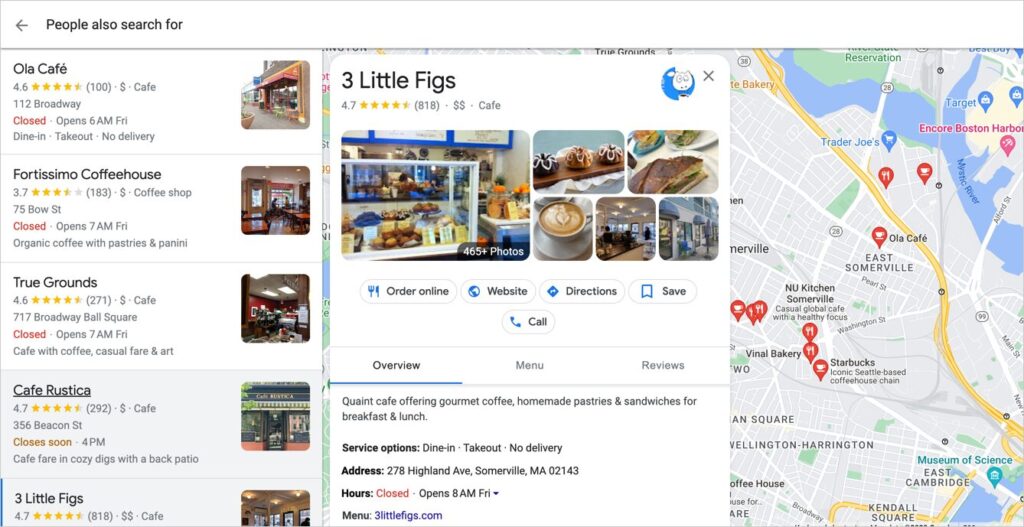

9. Google Reviews
Closely related to #8 are Google Reviews. These will appear on your Google Business Profile, in Google Maps, and in Google Search’s new AI feature.
Regarding ranking, your total number of reviews and average star rating can significantly influence your position in the Local Pack.
These reviews also shape consumer decisions. Research by BrightLocal shows that most shoppers check Google Reviews before choosing a business to patronize and that Google Reviews is the most trusted review platform.
Average star ratings and recency of reviews can also influence consumer decisions. Learn more in How to Manage Google Reviews for Improved SEO.
10. Business Directory Listings
Lastly, getting your business listed in online directories also influences local rankings.
This is as easy to set up as creating a Google Business Profile.
Learn how to get business directory listings quickly and discover the importance of NAP in SEO.
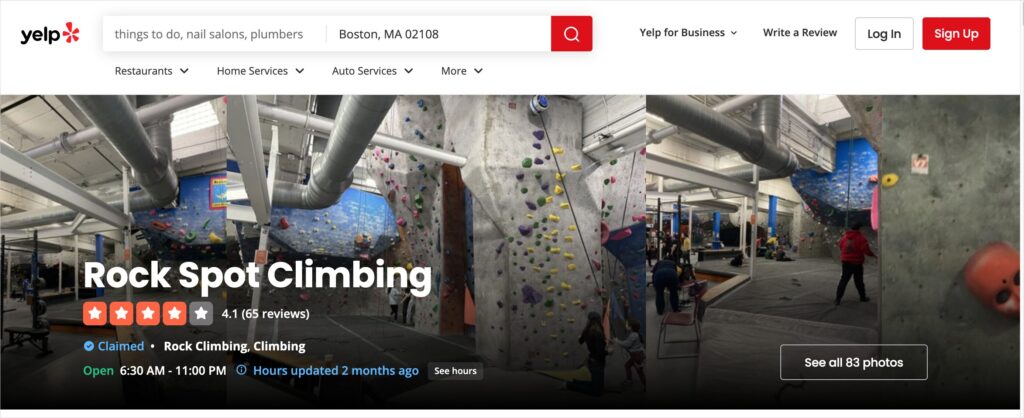

Take Action: On-Page Optimization
Once your content is finished, optimizing it for SEO is crucial.
This is easier than you may think. Users of modern website platforms like WordPress can use an SEO plugin.
We recommend All in One SEO (AIOSEO). This is an established plugin with thousands of 5-star ratings on WordPress.org. Over 3 million users rely on All in One SEO to improve their rankings.
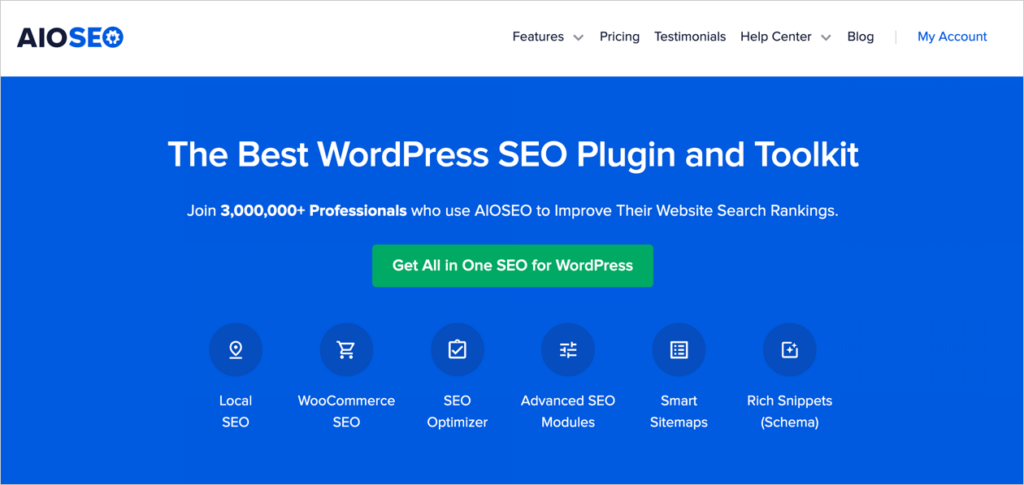

All in One SEO (AIOSEO) will analyze your pages and provide clear action steps for improving them. This removes a lot of the guesswork from SEO.
The 1st step is to download and install the plugin. Then, navigate to any page, and you’ll find AIOSEO’s recommendations in a right-hand sidebar, right in the WordPress editor.
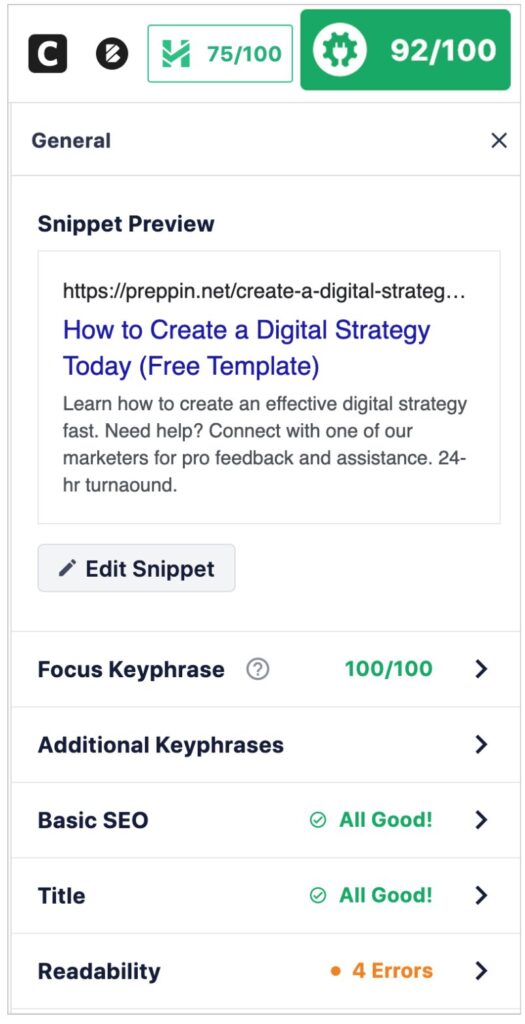

Here are some of the elements AIOSEO will analyze.
Keyword Optimization
Before creating new content, it’s wise to choose a main topic (keyword) for your page.
All in One SEO will check to see if you placed your target keyword in these places:
- Slug
- Title
- Description
- 1st paragraph
- Some subheadings
- Some alt text (if applicable)
If your keyword is missing from those areas, you’ll be prompted to add it.


This feature of AIOSEO isn’t required by Google. It’s a way to ensure the main topic of your page is clear to search engines and users.
A web page title is sometimes called an SEO title or title tag. The description is called a meta description. The title and description are also called “meta tags.”
Readability and Formatting
All in One SEO will also analyze your page’s “readability.” This check uses the Flesch Reading Ease Score and ensures sentence length isn’t excessive.
The plugin checks for adequate use of transition words and will flag the use of the passive voice.
This check also includes formatting and encourages the best practice of making content scannable (i.e., easy to skim and read on digital screens).
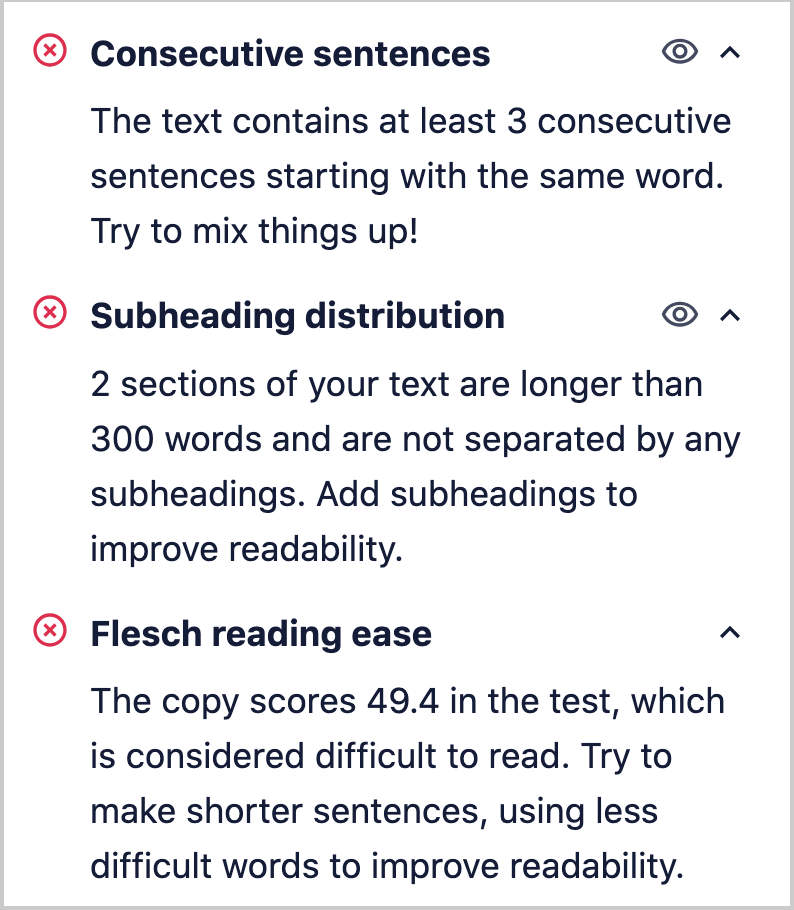

So, don’t be surprised to see prompts to keep paragraphs short and to break up long text passages with relevant images, videos, and subheadings.
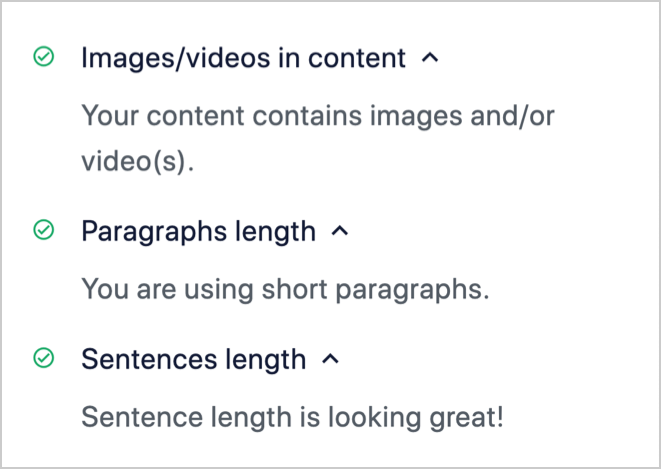

You’ll find plenty of uses for AIOSEO’s other benefits, including:
- Rich snippets: Instantly add code that helps Google understand your page better and surface it for relevant queries. Rich snippets attract more click-throughs.
- Link Assistant: Quickly add internal links to identify your most important pages to Google and fix orphan pages.
- Author SEO: Turn up your E-E-A-T signal and broadcast your expertise.
Now, let’s settle some controversies.
3 Things Mistaken for Google Ranking Factors
These factors are commonly described as ranking factors. But are they?
Bounce rate
In previous years, some SEO leaders inferred a causal link between bounce rate and search rankings.
At that time, bounce rate, as measured in Universal Analytics, was poorly conceived. This metric has been refined for GA4 and is now much more helpful for analyzing page performance.
Regardless of how it’s measured, Google analysts John Mueller and Greg Illyes have stated bounce rate is not a ranking factor.
Learn more in Is Bounce Rate a Ranking Factor?
Social Signals
Social media shares, comments, and interactions are not Google ranking factors either.
While plenty of social media pages rank highly in search results, Google representatives deny that social signals impact the rankings of website pages.
Content Length
Despite the persistent notion that every high-ranking article must be 2,000+ words long, content length is not a ranking factor.
While some keywords (topics) warrant comprehensive coverage, more than length alone will be needed to rank highly.
Find out more about content length in Word Count for SEO: Does it Matter?
The Grey Zone: Ranking Factors, Tactics, or Myths?
Now, let’s move into the shadows of the grey zone, where tactics, strategies, and ranking factors get mixed up.
Domain Age and Domain Authority
Domain age and domain authority are sometimes described as ranking factors.
Any metric that can be manipulated is unlikely to be a ranking factor, though. So, buying old domains doesn’t mean you’ll rank well. Same thing for buying domains with high authority scores.
Yet tactics that rely on domain age or authority can be effective for SEO. Let’s take a closer look at why.
1. Domain Authority
Domain authority is a metric in keyword research tools like Semrush and Ahrefs. It was first pioneered by Moz.com.
All software tools that provide domain authority scores use proprietary formulas. Prominent in these formulas is the backlink profile of the domain.
If the domain has many backlinks, and a number of those are from authoritative sites like news media, government, or universities, it’s likely to have a good domain authority score.
The caveat is that the backlink profile has to be free of any evidence of link schemes.
Domain authority scores can be helpful. After all, backlinks are ranking factors. But the scores don’t tell the whole story. For example, if a domain with a good authority score expires, it can be purchased and repurposed by a private blog network (PBN) as part of a link scheme. (Learn more in our article on paid links.)
In fact, it’s common to receive pitches from individuals listing low-quality, “high-DA” websites that you can buy links from.
2. Domain Age
Anyone involved deeply in SEO knows of success stories where individuals purchased old, expired domains to accelerate SEO gains.
Indeed, Authority Hacker, experts in creating profitable websites, promotes using expired domains as an SEO shortcut.
But there’s more to this tactic than you may realize. You need to research the domain, inspect the backlink profile, determine the organic traffic, look at the spam score associated with the domain, and so on.
You’ll also need to decide whether you will post your content on the purchased domain or use it to redirect to another domain.
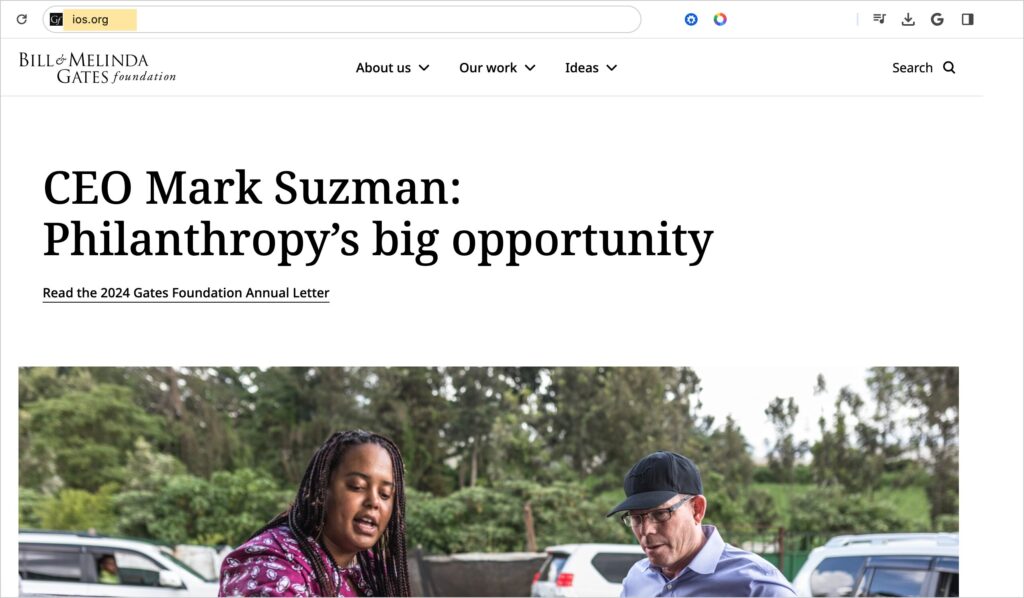

To be clear, it’s not age alone that confers value on a domain. Instead, valuable old domains have strong backlink profiles built up over years.
Summary: Valuable old domains can be used to jumpstart your SEO under the right circumstances. But the trick is assessing a domain’s value and executing well.
User Interactions
Do user interactions with a web page influence that page’s rankings in search engine results?
There are plenty of articles that claim user behaviors influence rankings.
Some of these articles simply copy what others have reported. But before this copycat activity, there were SEO professionals whose research led them to conclude that Google analyzes user interactions.
Some evidence for these conclusions came from search engine patents, papers, and, more recently, documents that surfaced during Google’s antitrust trial in 2023.
See 7 must-see Google Search ranking documents in antitrust trial exhibits to learn more.
And read the section on Implicit User Feedback in A.J. Kohn’s classic article, It’s Goog Enough.
Once you’ve scanned that, drop a comment below. Do you think click data plays a role in Google rankings?
Moving Forward With SEO
You’ve learned some of the most important ranking factors and how to optimize a page for higher rankings.
In addition, we looked at some grey areas and debunked some fake ranking factors.
So, what’s next? Learn how to use All in One SEO as an on-page SEO checklist. And see how to use the inverted pyramid to attract loyal readers.
And don’t forget to plan for conversions.
Join us on our YouTube Channel to find simple WordPress SEO tutorials. You can also follow us on X (Twitter), LinkedIn, or Facebook to stay in the loop.
Disclosure: Our content is reader-supported. This means if you click on some of our links, then we may earn a commission. We only recommend products that we believe will add value to our readers.


